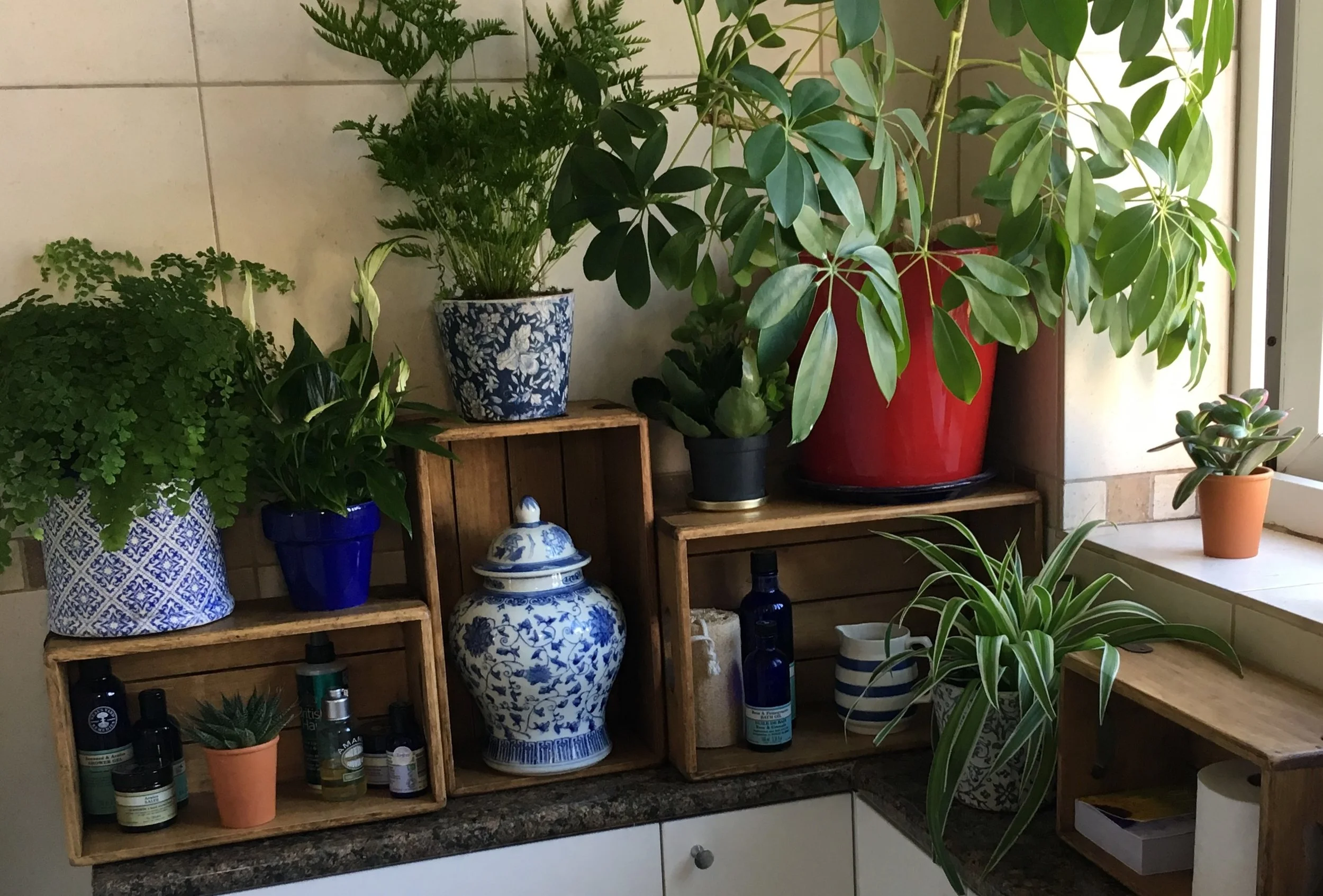The rise of biophilia, and bringing nature to you
A few weeks ago, I posted a mini makeover of adding plants to my bathroom onto my business Facebook page. I was really surprised (and pleased) how much it engaged and inspired people. But, maybe I shouldn’t have been?
In 2017 Biophilia and Biophilic design started trending and especially in relation to workplace design. The term "biophilia" means "love of life or living systems and was first coined by social psychologist Eric Fromm in 1964. Indeed, Scientists think that we all have a connection to the natural world built up through hundreds of thousands of years of living in rural settings.
Unfortunately, today, most people live in very urban spaces and it seems that there is a link between increased urbanisation, a loss of connection to the natural world and a decrease in mental and physical health.
Much research has been done in workplaces like offices, hospitals, and schools. The Global Impact of Biophilic Design in the Workplace report (from Human Spaces) found that those who worked in environments with natural elements reported a 15% higher level of well-being, a 6% higher level of productivity and a 15% higher level of creativity”.
So, what are these natural elements? And how might you improve your home or work environment? Here’s my Secret 7 for bringing the outside in:
1. Make the most of natural light. Evaluate where the light comes from and when. Is your kitchen sunny in the morning? Are you making the most of it? Look at your window treatments. Are you blocking light unnecessarily?
2. Mimic dappled and subtle light. Use your artificial light artfully. Think of the pleasure you gain from lying under a tree in summer and enjoying the dappled light and shade from the branches and leaves above. Create similar pools of light and shade to create a relaxed mood in the evenings.
3. Use patterns and scenes of nature in your home; prints of botanicals, cushions with animal motifs, paintings of nature, scenes of countryside etc. I am currently working with a client who loves the seaside. The design is still in discussion and one idea we’ve discussed is placing a large canvas of a seaside scene (photograph) above the dining table to stretch over 3 meters across the wall. Something like this….
4. Make the most of natural views outside into your garden and beyond if you have them; views of birds, ponds, trees, and plants. We love good views. It helps us to feel safer.
5. Think about where you could add indoor plants. Plants have a feel-good factor, but they also clean the air of toxins like formaldehyde and benzene!
6. Use natural materials like wood, rope, stone, wicker, wool. The feel of these natural textures is fabulous.
7. And finally remember that your environment is not just visual, but made up of textures, sounds and smells. Fresh flowers and quality room sprays and diffusers can bring in the smell of a lovely garden or meadow. If you can, open your windows to hear bird song or the sound of water. Alternatively find a recording that sounds like that.
This field is expansive and much more complex than I’ve had space to write about here. Please do write to me if you want to know more. On a personal note I hope this popular trend of loving Biophilic design continues. An approach that considers human health and wellbeing as core to building design must be good!


